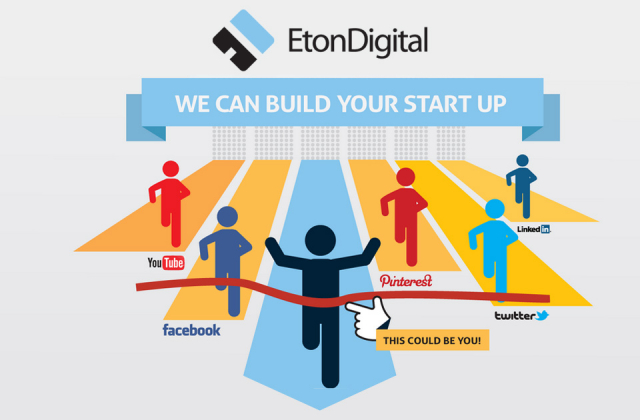“If you don’t have a very tidy mobile operation then you are going to be missing sales to people who can’t be bothered with you”
These are the wise words of Gregor Lawson, co-founder and marketing director of Morphsuits, a company launched in 2009 with a predominantly social media marketing strategy and now boasting a turnover of £11 million. This post is intended to develop further on this absolutely key point for anyone interested in making sales online.
First off, the days when mobile sites could be discounted and ignored are well and truly over. With the increasing ubiquity of smartphones, more and more consumers are making purchases using these much smaller handheld devices. If you haven’t noticed such a trend with regard to your own sales, it could be because your mobile site isn’t up to the job…
UX and mobile websites
The key thing to understand with mobile is that users will generally already be familiar with your site and how it functions in a desktop browser (typically consumers prefer some initial familiarity with the ‘conventional’ site before making the jump to using apps or mobile sites for purchases). Plus, entering the data to create user accounts is a bit of a pain on a smartphone screen, while logging in to an already existing account is a lot less effort.
Therefore, for established users with existing accounts, logging in via mobile apps or sites is increasingly attractive for sites that they trust – which means that all you have to do as a business owner is ensure that they don’t get so frustrated with your mobile site that they decide it’s not worth the bother and abandon the endeavour (or worse yet, make a purchase with a competitor instead).
With that in mind here is a quick test for assessing whether your mobile site is up to the job:
#1 Do you have a dedicated mobile site?
First things first; if your mobile site is basically just your normal website awkwardly handled on a 4.5″ touchscreen then you’re definitely losing sales as a result.
People don’t expect to have to scroll endlessly left and right to see all of the relevant info they need to make a purchase just because the dimensions of your site are ill suited to a touchscreen smartphone. They also don’t expect to have to pinch zoom repeatedly just so buttons and tick boxes appear big enough for them to actually interact with them.
Mobile interfacing is different to desktop interfacing and your mobile site must reflect this fact.
#2 Is your dedicated mobile site offering the full range of functionality offered by your main site?
OK, this is a trick question. The answer, in most cases, should really be ‘no’ (unless you really are a very simple business which only has a minimal site anyway). The point is that users will often be happy only doing some things on mobile – and offering them a huge array of options simply adds clutter that gets in the way of them engaging with your core products and services.
So leave the experimental stuff for the main desktop site and focus your mobile site on the absolute core functionality which your customers are happy to do on mobile. (You don’t see the main Amazon app also offering Amazon Web Services products, do you? There’s a reason for that).
#3 Does your site on mobile features the full extent of branding material offered on your main site?
Another trick question! The answer should be ‘no’. Your mobile site should offer only your core brand identity – not the full range of supporting images and media which will simply clutter up the interface.
Go and take a look at the Easyjet mobile website. What says ‘Easyjet’ about it? Only the font and the use of the idiosyncratic orange colour. Meanwhile the main desktop site also features a range of stunning images of popular locations and holiday experiences which work great in that context, but would be clunky and unworkable on mobile.
It should be noted that consistent branding is absolutely essential across desktop and mobile sites – but also that, when it comes to mobile, branding needs to be boiled down to certain core features which won’t obstruct a fluid and easy interface (and also slow down load times over 3G networks).
#4 How many ‘actions’ would a user need to perform to make a purchase on your site?
This is a key question for both desktop and mobile but on mobile it really becomes critical. Do you have unnecessary extra menus and confirmations within your mobile buying process? How many pieces of text does a user have to enter to make a purchase?
Text entry is especially annoying on some smartphones and will sometimes be a key factor in someone giving up midway through a purchase/booking and leaving it for later (or never). If your answer to the above is over 10 then your mobile site is probably not quite as efficient as it could be (bear in mind that scrolling also counts as an ‘action’).
How to solve this?
The main mistake most mobile websites make is that they use the main desktop website as a starting point. But the only way to arrive at a successful mobile website is to start of looking at the business and its products and design a mobile website as if the desktop one did not even exist. Indeed, the desktop site should only provide a reference point in terms of ensuring that branding and terminology is consistent (e.g. similar colour scheme).
The reality is that if your business is doing well online with a desktop browser based site – there’s no reason why it won’t do even better via a well designed mobile site.
However, there is a blunter way of putting it: just because your online sales via a desktop site were good in 2020 doesn’t mean that you aren’t going to lose a proportion of them to competitors’ mobile sites in 2021 – unless you also have a workable and fit-for purpose mobile site yourself.
Need help with mobile application development? Request a free quote.




